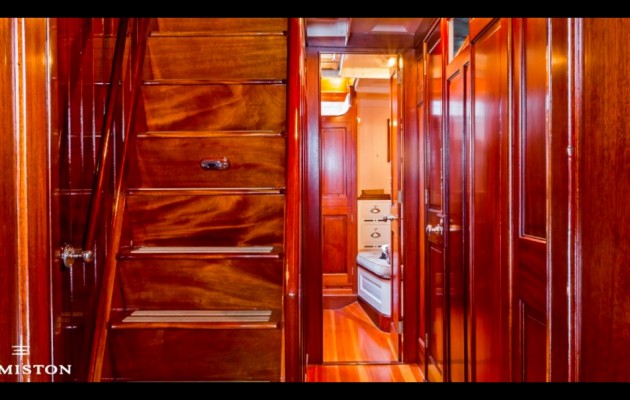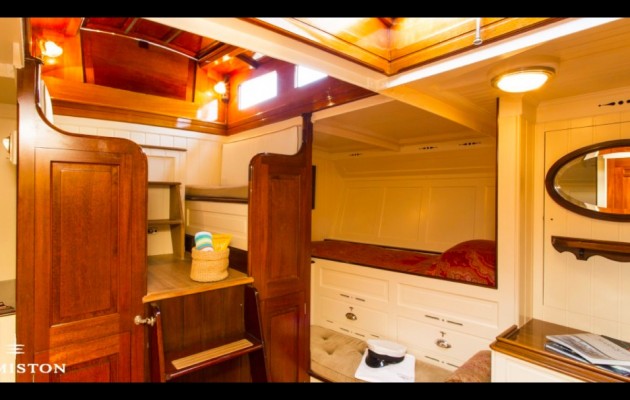Mariquita, one of the best examples of William Fife's 'big class', is on the market, 104 years after she was launched
Not very often does a yacht come on the market that has such a storied history behind her. Marquita, the glorious Fife design, one of the most elegant yachts in the classics circuit, is on the market and yours for €3.5 million.
She is for sale through Bernard Gallay Yacht Brokerage.
Mariquita dates back to some of the grandest days of yachting. She is is one of the most historic and interesting of the Fife designs, a 19 Metre, 125ft LOA and launched in 1911.
Built as yard no 595 at the W. Fife and Son yard in Scotland, Mariquita would originally have been intended only to last for a few seasons’ hard racing.
The Metre rule was conceived to cater for all pockets, and fleets of 5, 6, 7, 8, 10, 12, 15, 19, and 23 metres were built in varying numbers, the 8s being the smallest to follow the social circuit around the UK during the summer months. Many of the larger racers would become cruising yachts in later life but only a few of these classic cutters have survived and most have now been restored.
Mariquita was restored over two years at Fairlie Restorations in the UK in 2004, as the ravages of time had eaten deep into her structure of steel and Honduras mahogany planking, but at their hands the standard of build and finish surpassed her original launch day in 1911.
Mariquita is the only surviving 19 Metre Class yacht and the oldest of only four remaining of the metre class ‘big class’, the others being the 23 Metre Class ‘Astra’ (1928), ‘Cambria’ (1928), ‘Candida’ (1929).
Sailing her is a joy and an art. Displacing 78 tons, Mariquita reaches hull speed at around 12.5 knots and is steered by a small diameter traditional wheel. The weight on the helm is surprisingly high, a far cry from modern steering systems and fingertip control.
Some 3400ft2 of the 6260ft2 of total upwind sail area is taken up by the mainsail and the 71ft main boom is sheeted to the counter deck with a 6:1 mainsheet system hauled by seven crew. Centring the mainboom for a gybe is said to be a humbling experience for the unfit.
Once trimmed, a stopper cord is wound around the sheet to take the strain before it can be made up on a bronze bollard. From this the trimmer can ease the sheet when required, and if this all sounds complex, remember there are seven sails to handle and each with its own techniques to master.
One can just imagine a day’s racing at Cowes Week in 1911 with all sail set in over 20 knots of breeze in the company of equally powerful boats. Sails and topmast would be expendable and regularly broken, no quarter would be given or expected from the opposition, and as a crew member you could not expect an early rescue if you slipped overboard.
The contrast with modern boats, equipped with pulpits and guardwires, is extreme, adding to the thrill of sailing a yacht that can only be operated by a highly experienced crew under firm command.
Not surprisingly, there is a thirst to relive those heady days and try to understand the people who made it happen. When designers such as Nicholson, Mylne and Fife cajoled their owners to spend some of their fortunes, they could not have imagined that that well over 100 years later their creations would be still draw admiring looks, still be the treasure of owners and raced with gusto and glamour of their own era.
Mariquita specification
LOA: 38m 125ft
LOD: 29m 96ft
Beam: 5.3m 17ft 4in
Draught: 3.7m 12ft 0in
Sail area (upwind): 585m2 6260ft2
Displacement: 78 tons
Type: International Rule 19-metre Class
Designer: William Fife III
Builder: W. Fife and Son, Fairlie
Year: 1911











